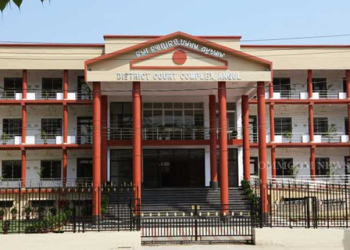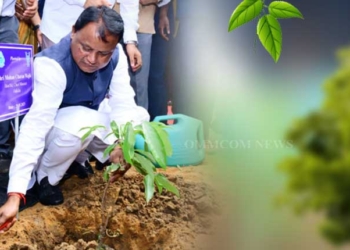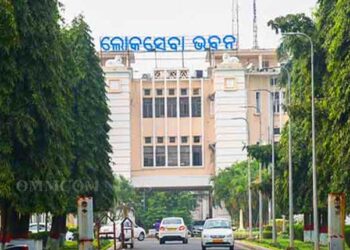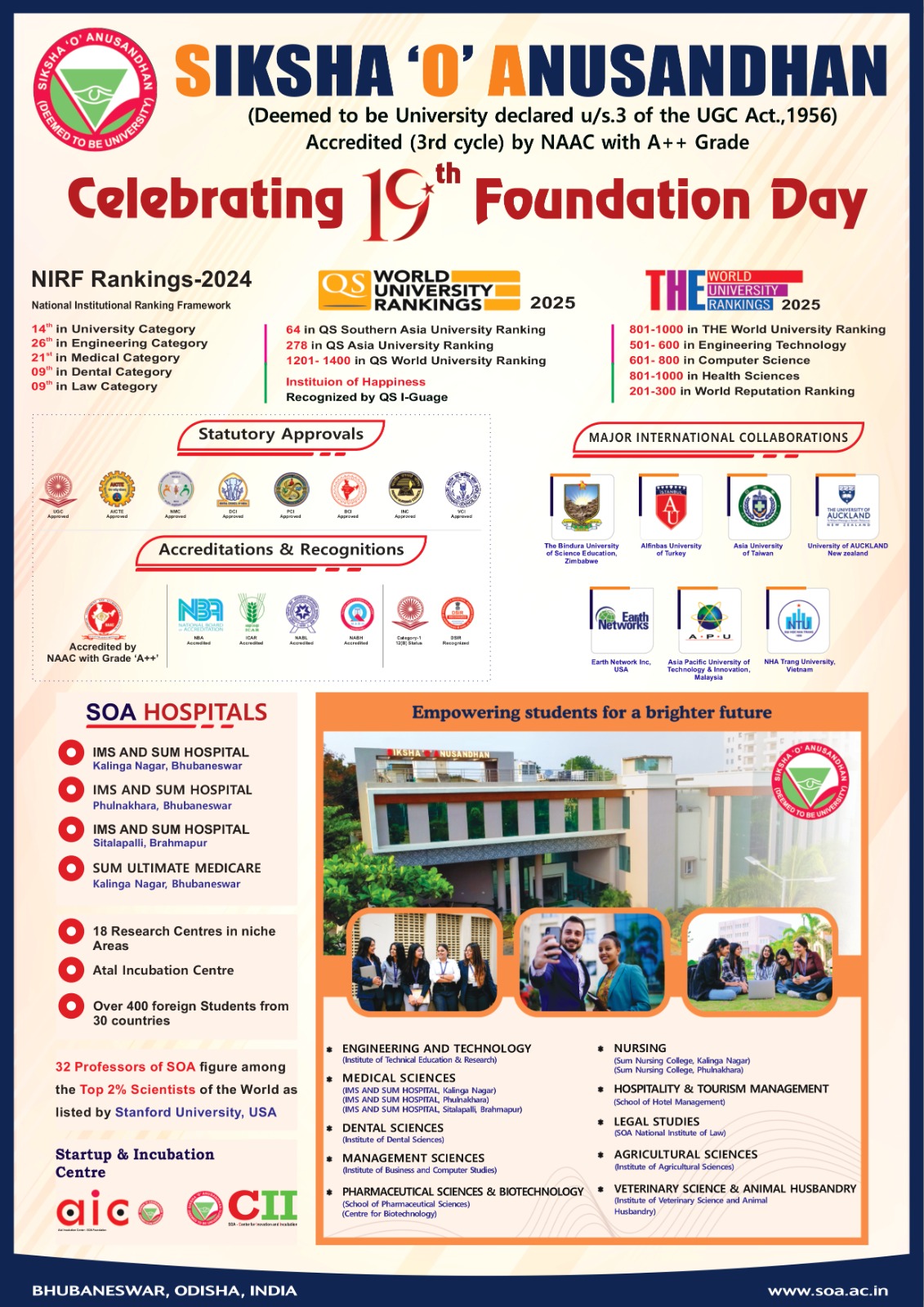Bhubaneswar: On 3rd February, 2023 Virtual High Courts were inaugurated by Dr Justice DY Chandrachud, Chief Justice of India in 10 districts namely Sambalpur, Ganjam at Berhampur, Bhadrak, Kalahandi at Bhawanipatna, Khurda at Bhubaneswar, Bolangir, Koraput at Jeypore, Puri and Sundargarh at Rourkela.
The inaugural function was held in Odisha Judicial Academy where Dr Justice S Muralidhar, Chief Justice and the Judges of the High Court of Orissa were present. Among others, the former Judges of the High Court, Advocates of the 10 districts, members of the High Court Bar Association, Advocate General of Odisha, Deputy Solicitor General of India for the High Court of Orissa, Judicial Officers and Government Officials attended the function.
The Chief Justice of India inaugurated the Virtual High Courts through virtual mode from Delhi. Existing Video Conferencing Facility The High Court of Orissa has undertaken a host of initiatives to adopt technology into the day-to-day processes of the justice delivery system in the State. Popularizing e-Filing and adoption of Video Conferencing in proceedings both before the High Court and the District Courts have been the foremost amongst such initiatives.
During the period of the COVID 19 pandemic, the High Court of Orissa had established VC cabins in each district so that the advocates could appear in any court, including the High Court of Orissa from any District. This has become a permanent feature in the District Courts. As far as the High Court is concerned, its system of hybrid hearing is continuing, and is welcomed by the Bar throughout Odisha.
Initiative of Virtual High Court in Districts Proposal for Virtual High Court in the Districts was placed before the Supreme Court of India on judicial side and was approved by the Supreme Court in order dated 14th December, 2022 in TP(C) No.2419 of 2019 M/s. PLR Projects Pvt. Ltd. Vrs. Mahanadi Coal Fields Ltd. and others.
Accordingly, the High Court of Orissa has now decided to take a step forward to establish dedicated Virtual High Courts in 10 of the 30 Districts in the first phase. These are at Sambalpur, Ganjam at Berhampur, Bhadrak, Kalahandi at Bhawanipatna, Khurda at Bhubaneswar, Bolangir, Koraput at Jeypore, Puri and Sundargarh at Rourkela. The choice of the first 10 virtual High Courts was dictated by the geographical location and the volume of cases filed from the Districts in the High Court.
The Virtual High Courts at Sambalpur, Bolangir, Sundergarh at Rourkela are in Western Odisha, Kalahandi at Bhawanipatna, Koraput at Jeypore and Ganjam at Berhampur in Southern Odisha, Balasore and Bhadrak in Northern Odisha, and Khurda at Bhubaneswar and Puri are in Eastern Odisha.
It is seen that of the present pending caseload of around 1.7 lakh cases in the High Court, around 72,760 cases are filed from the above ten districts, with the highest of the above ten districts being Khurda from where around 27,160 cases have been filed. The other approximate figures of filing of cases from the remaining 9 Districts are: Sambalpur (4,000), Ganjam (10,500), Bhadrak (5,300), Kalahandi (3,400), Bolangir (3,800), Koraput (3,200), Puri (8,200) and Rourkela at Sundargarh (3,278).
The above districts are also chosen in a manner that will make it easy for those in the neighbouring districts within a radius of 100 km to use the facilities of the Virtual High Court in those districts for the present. For e.g., the Virtual High Court facility in Sambalpur can be accessed by those in the neighbouring districts of Bargarh, Deogarh, Jharsaguda and Angul. In the next phase, it is proposed to open more Virtual High Courts in those Districts where the volume of filing will justify it or where there is a long standing demand of the Bar for such facility.
Cuttack being the seat of the High Court, there will be no need to have an additional Virtual High Court there. The above facility will be in addition to the facility of virtual court rooms and VC cabins that are available in almost every district in Odisha.
Facilities in Virtual High Courts
These Virtual High Courts will have video conferencing facilities, and importantly, a ‘Back Office’ where it will be possible for lawyers to e-file their cases with assistance from staff/officer dedicated for that purpose. Advocates or parties in person not familiar with computers can hand over the hard copy of the petition to the staff at the Back Office who will then scan and prepare and e-file the petition.
The following services will be available through digital mode in these Virtual High Courts: (a) Scrutiny of e-filed cases and removal of defects; (b) Numbering of the cases (c) Listing of cases including mentioning before the High Court in virtual mode. (d) Submission of application for and issuance of certified copies of the orders and judgments.
These facilities are in addition to and not in substitution of any of the facilities for lawyers and litigants.
ICT devices made available
The High Court has supplied the following ICT devices to the Districts for functioning of the Virtual High Courts:
• 55 inches Television (for appearing before the Benches of the High Court);
• Speakers (for clear audibility);
• Document Visualizer (for display of the documents during hearing of the cases);
• Stand cameras and microphones (so that the conducting Advocates can be clearly visible and audible to the Benches);
• Computers, printers and scanners.
Deployment of staff
The High Court has deputed a trained Assistant Section Officer (ASO) and a Group D employee to each of the 10 Districts to run the above Back Office in the initial phase. The local staff in each of the Districts will be trained to take over after a few months.
Training sessions for familiarisation with the system
Simultaneously, there will be multiple hands-on training sessions for lawyers, law clerks and staff in the districts for making them conversant with use of the facilities available in Virtual High Courts. A Standard Operating Procedure (SOP) on use of the facilities has been drawn after receiving inputs from the District Judges with a view to facilitating the Advocates in using the facilities.
The inaugural function
Delivering the welcome address in the inaugural function at Odisha Judicial Academy, Justice Subhasis Talapatra, the Chairman of the IT & AI Committee of the High Court said establishment of the future High Courts is a strong experimentation on the part of the High Court with the use of technology which will ultimately result in narrowing of gaps and strengthening of the open court system.
Speaking on the occasion Dr S Muralidhar, Chief Justice setting up Virtual High Courts in the Districts is a big step forward and if it succeeds, it will change the face of the judiciary. The Chief Justice said through the Virtual High Courts the High Court of Orissa will make it presence felt in the Districts and it will ultimately serve the people of Odisha.
He informed the audience about the facilities made available in the Virtual High Courts and said the Advocates even in the remote Districts will be able to file a case before the High Court, get his case heard and get the certified copies of the orders. The Chief Justice said the Virtual High Court of the 10 Districts established in the first phase will serve the needs of the neighbouring Districts till it is set up in the remaining Districts. Dr Muralidhar thanked the e-Committee, Supreme Court of India for extending support in all the initiatives of the High Court.
Delivering the inaugural address Chief Justice of India Dr DY Chandrachud applauded the initiative of the High Court of Orissa and said that the High Court has been a trail blazer in e-Initiatives and the movements spearheaded by it will turn into a National movement when the other High Court in the country will follow the suit. The CJI said while most of the High Courts have only one seat and few High Courts have second Benches, the High Court of Orissa will be the first High Court to be accessible from all the Districts of the State. He congratulated the Chief Justice Dr S Muralidhar saying that it has been possible due to his dynamic leadership and also lauded
The efforts of the IT technicians, operators and staff. The CJI said the Virtual High Court in Districts will ensure decentralization of administration of justice and ensure accessibility of the High Court to the Advocates of remote Districts. He added talent has no geographical boundaries and videoconferencing facility in the Virtual High Courts will give exposure to the legal talents of the smaller cities who often find it difficult to practise in the High Court due to lack of accessibility.
The CJI announced that a new initiative of translating its judgments into the regional languages with the use of AI tool has been adopted by the Supreme Court with the help of IIT, Madras and expressed hope that under the leadership of Dr. S. Muralidhar the High Court of Orissa would adopt translation of its judgments into Odia. The CJI also informed that the Supreme Court has launched e-Supreme Court Reports by which 35,000 judgments of the Supreme Court have been made available in the portal for use of the lawyers, Judges and litigants free of charge.
Dr Justice Sanjeeb Kumar Panigrahi, Member of the IT & AI Committee of the High Court proposed the vote of thanks. He said the problem of accessibility due to distance and expenses will be resolved by the Virtual High Court.
A short video presentation of the Virtual High Courts was made after the inauguration. The Virtual High Court in the Districts would boost the participation of Advocates in judicial proceedings in the High Court of Orissa from anywhere in Odisha. With this the problems of long distance will be resolved as the High Court will be easily accessible to the litigants and Advocates in the remote corners of the State.















